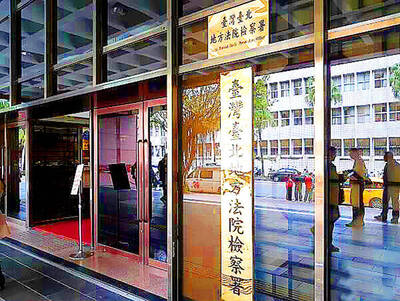In the debate over high-technology work migrating abroad, there has been widespread agreement on at least one thing: The jobs requiring higher levels of skill are the least at risk.
Routine software programming and testing jobs, analysts agree, are the ones most susceptible to being grabbed by fast-growing Indian outsourcing companies. By contrast, the people who devise the early blueprints for projects -- the software architects -- have been regarded as far less likely to see their jobs farmed out.
But Microsoft contract documents show that as far back as 2001 the big software maker had agreed to pay two Indian outsourcing companies, Infosys and Satyam, to provide skilled "software architects" for Microsoft projects. The documents were obtained earlier this month by WashTech, an organization of technology workers based in Seattle, which gave copies to The New York Times.
"The policy prescription you hear from people again and again as the response to the global competition of outsourcing is for Americans to move to high-end work," said Ronil Hira, an assistant professor for public policy at the Rochester Institute of Technology.
"It's important to dispel the myth that high-end work is immune to offshore outsourcing," he said.
"What is not clear," Hira added, "is how much of that high-end work will go abroad."
A Microsoft spokeswoman, Stacy Drake, said that as a matter of policy the company did not comment on individual contracts with suppliers. But, she said, "We often use outside companies for projects."
The outside contractors, Drake said, are used to bring in specialized expertise Microsoft may not have in-house or to bring additional technical support onto a project.
Still, Drake said, building the "core intellectual property" in Microsoft products is left to full-time company employees.
Though definitions vary, software architects are highly skilled workers who often earn six-figure salaries in the US. The Microsoft contracts with Infosys and Satyam show that the work of software architects, senior software developers and software developers was being done by employees of the Indian companies working at Microsoft facilities in the US.
Their work did not come cheap for Microsoft, which was billed US$90 a hour for software architects, or at a yearly rate of more than US$180,000. Senior software developers were billed at US$72 an hour and software developers US$60 an hour.
The on-site work, said Hira, an expert on offshore outsourcing, is usually done by Indian software engineers who come to the US on H-1B visas, which allow foreign workers to be employed in the US for up to six years.
The Indian workers themselves are paid a fraction of what their employers collect. The top annual salaries paid by Indian outsourcing companies to Indian software experts working in the US are US$40,000 or so, Hira said.
The contracts also say that for short stints of work, less than 90 days, Microsoft will pay for round-trip economy airfare for travel between India and the US.
The contracts also include work done in India, by project managers and by software development and testing engineers. The billing rate for this work ranges from US$36 an hour to US$23 an hour.
A spokeswoman for Infosys said the company did not comment on its contracts, and a Satyam spokesman could not be reached.
Critics of the outsourcing trend regard such agreements with Indian contractors, with work done both in the US and in India, as a step toward shifting more and more skilled technology jobs overseas.
"Microsoft has hired vendors whose whole reason for being is to transfer work offshore," said Marcus Courtney, president of WashTech, an affiliate of the Communications Workers of America.
The foreign competition for work at Microsoft, Courtney said, will help the company's management put more pressure on wages for its American workers and reduce employee benefits. Last month, Microsoft announced that it planned to cut costs by an estimated US$80 million a year by trimming prescription-drug benefits, tightening parental-leave policies and making it more expensive to buy Microsoft shares through the employee stock purchase plan.
Despite its use of foreign contract workers, Microsoft expects to add 3,000 to 3,500 full-time employees to its US payroll of 37,000 in the fiscal year that ends next month.

INVESTIGATION: The case is the latest instance of a DPP figure being implicated in an espionage network accused of allegedly leaking information to Chinese intelligence Democratic Progressive Party (DPP) member Ho Jen-chieh (何仁傑) was detained and held incommunicado yesterday on suspicion of spying for China during his tenure as assistant to then-minister of foreign affairs Joseph Wu (吳釗燮). The Taipei District Prosecutors’ Office said Ho was implicated during its investigation into alleged spying activities by former Presidential Office consultant Wu Shang-yu (吳尚雨). Prosecutors said there is reason to believe Ho breached the National Security Act (國家安全法) by leaking classified Ministry of Foreign Affairs information to Chinese intelligence. Following interrogation, prosecutors petitioned the Taipei District Court to detain Ho, citing concerns over potential collusion or tampering of evidence. The

Seventy percent of middle and elementary schools now conduct English classes entirely in English, the Ministry of Education said, as it encourages schools nationwide to adopt this practice Minister of Education (MOE) Cheng Ying-yao (鄭英耀) is scheduled to present a report on the government’s bilingual education policy to the Legislative Yuan’s Education and Culture Committee today. The report would outline strategies aimed at expanding access to education, reducing regional disparities and improving talent cultivation. Implementation of bilingual education policies has varied across local governments, occasionally drawing public criticism. For example, some schools have required teachers of non-English subjects to pass English proficiency

‘FORM OF PROTEST’: The German Institute Taipei said it was ‘shocked’ to see Nazi symbolism used in connection with political aims as it condemned the incident Sung Chien-liang (宋建樑), who led efforts to recall Democratic Progressive Party (DPP) Legislator Lee Kun-cheng (李坤城), was released on bail of NT$80,000 yesterday amid an outcry over a Nazi armband he wore to questioning the night before. Sung arrived at the New Taipei City District Prosecutors’ Office for questioning in a recall petition forgery case on Tuesday night wearing a red armband bearing a swastika, carrying a copy of Adolf Hitler’s Mein Kampf and giving a Nazi salute. Sung left the building at 1:15am without the armband and apparently covering the book with a coat. This is a serious international scandal and Chinese

NEGOTIATIONS: The US response to the countermeasures and plans Taiwan presented has been positive, including boosting procurement and investment, the president said Taiwan is included in the first group for trade negotiations with the US, President William Lai (賴清德) said yesterday, as he seeks to shield Taiwanese exporters from a 32 percent tariff. In Washington, US Trade Representative Jamieson Greer said in an interview on Fox News on Thursday that he would speak to his Taiwanese and Israeli counterparts yesterday about tariffs after holding a long discussion with the Vietnamese earlier. US President Donald Trump on Wednesday postponed punishing levies on multiple trade partners, including Taiwan, for three months after trillions of US dollars were wiped off global markets. He has maintained a 10 percent